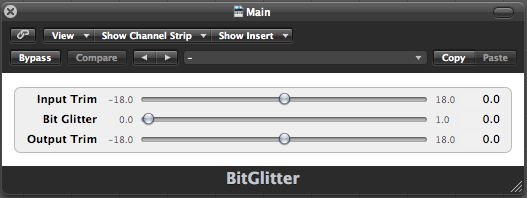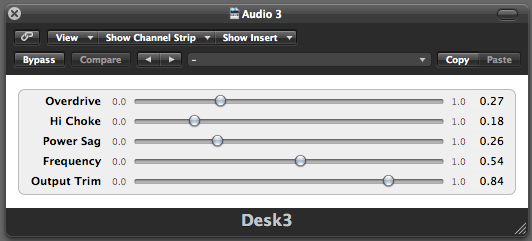BitGlitter
BitGlitterDemo started out as a universal binary AU plugin for emulating the sound of the classic Emu SP-1200 sampler, widely used in rap music—and then grew into kind of a monster.
People don’t always ‘get’ why you’d use an old digital device with limitations to the sound and frequency response, not to mention a 12 bit resolution, for fundamental parts of the mix. It seems crazy, but it’s not. Here’s what happens when you do that.
Primitive old digital (and for that matter, almost every shiny new digital plugin) produces aliasing—harmonics that bounce back off the top of the sampling rate and become added noise masking the sound. It’s very damaging for some purposes. It makes the sound more shallow, more opaque, and harder to focus on—seen in a lot of in-the-box mixes, especially before the advent of oversampling and antialiasing techniques.
It can also add solidness and opaqueness to the lows, throwing in aliasing that’s not brittle and high, but low and dissonant. The effect is a little like a low cluster on piano, jangly and with a lot of presence. When you apply this effect to, say, drums, it becomes more obvious why that is desirable. The drums (or the ‘beats’, which includes backing music built into the loops) get more punchy and solid.
The thing is, even this can be purposeful. If the whole production must have loud rhythm but focus attention on the vocal, one way to do that is wreck the beats with old sampling—letting them stay just as loud, hit more in the midrange, and make a lot of space for the vocal, which is typically not going to be bit-crushed (except for effect or something) and might even be doubled or cut with a very detailed, high-resolution mic. The contrast can be huge between the resolution of the beat and the resolution of the voice, allowing for very loud beats but total focus on the voice.
This slider can be automated, so it can do sweeps or flick to a specific spot for individual words or breaks. The barking or slammed stuff throws a lot of extra aliasing in, so it works like an accent and pops out of the mix without additional volume automation- then you can go back to near zero for the ‘vinyl-like’ straight sampler low-res sound. BitGlitter also has no latency, so it can be used live wherever you can use an AU. Bypass it to shut the low-res tone off. Very simple and effective :)
BitGlitter is $50.


